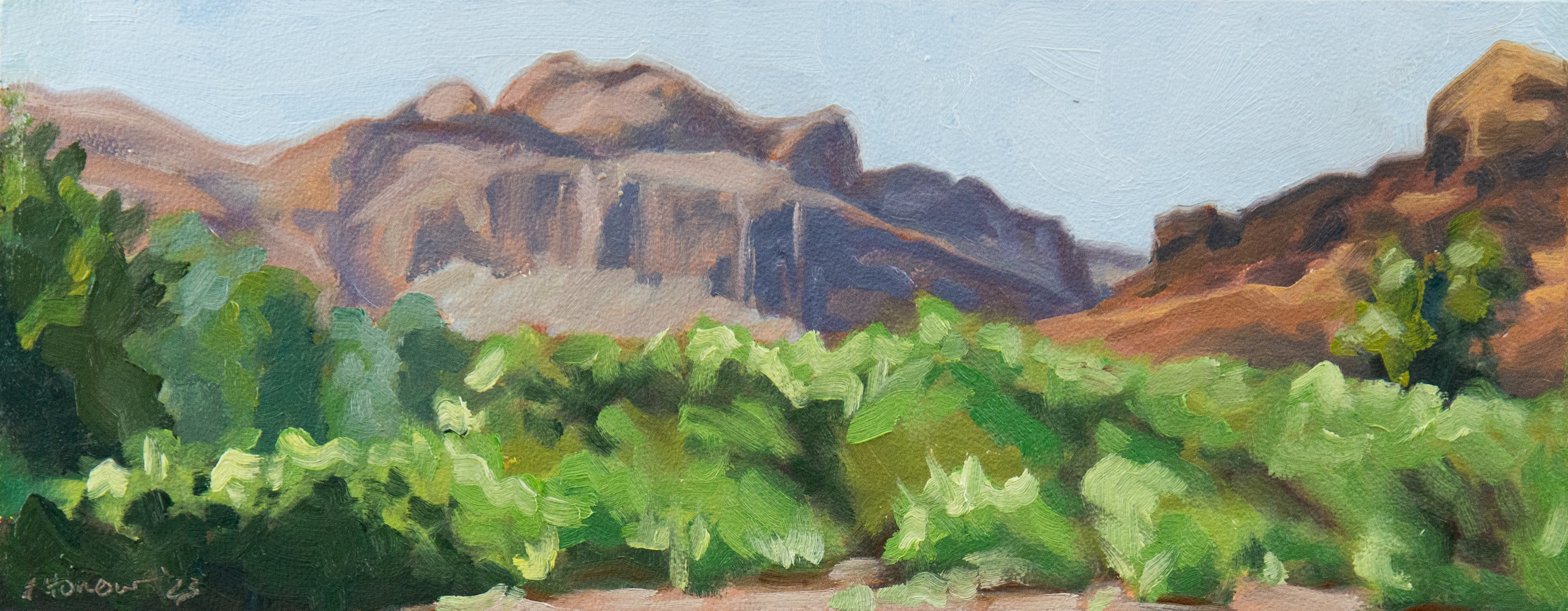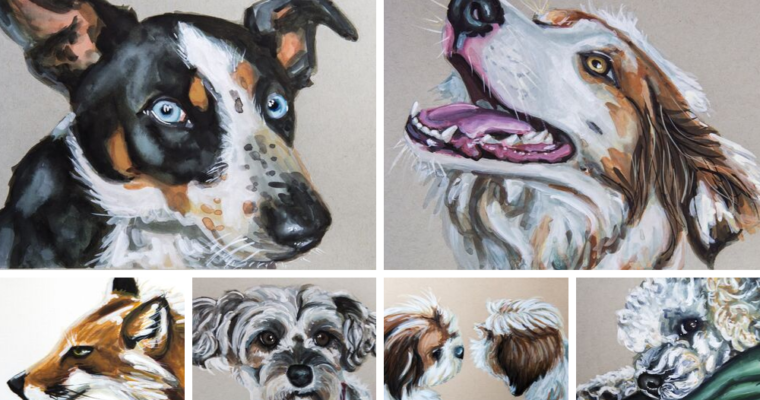
Way back in May I started a 30 day gouache painting challenge. It quickly turned into a challenge to filly my sketchbook, then the next sketchbook and finally my goal was to complete 100 paintings. I took plenty of days off so I didn’t finish this challenge in 100 days, but I did make it to 100 paintings. While I’m not actually finished with these gouache paintings, I will be taking a break for Inktober.

The evolution in skill from day one to now is very prominent. I didn’t really know what I was doing in the first weeks, but I finally started to figure things out about half way through the original challenge. I’ve improved so much that I’ve started to repaint some of my earlier paintings.

I’ve learned a few things about gouache during this painting challenge, but my main take away is just how much I love this medium. Keep reading for the useful gouache tips.

One. It is much easier to use gouache when it is “activated.” I use a pipette to drop clean water onto my dry gouache while I sketch and prepare my surface. By the time I’m ready to paint, my paint is also ready and almost the consistency of fresh from the tube gouache. Alternately, you could squeeze out fresh gouache each time, but I think my method wastes less paint overall.

Until now, I didn’t understand why watercolor and gouache came in the tiniest tubes of paint. It makes sense now. A little goes a very long way and since it can pretty much forever be reactivated, there is very little waste. I think this also explains the size of other medium tubes. Acrylics dry fast and are permanent once dry and a lot is wasted on the palette so the tubes of acrylic are typically large. Oils last quite a while on the palette, but eventually dry which means less waste on the palette and explains the medium tube size.

Two. A damp brush is better than a dripping wet brush. After cleaning my brush off, I dry it by daubing it onto a paper towel. Thin paint is fine in the initial layers, but as I move up to the final layer it looks best to use more opaque washes. I used way too much water in my first several paintings, but I think I’m finally learning water control.

Three. Zinc white is an excellent mixing white while titanium white is best for final bright white highlights. I bought a larger tube of titanium white starting out and a small tube of zinc white, but now that I’m more familiar with gouache, I wish I would have done the reverse. I don’t use zinc white in oil painting because of it’s tendency to crack, but I have since learned that this is a non-issue with gouache. Gouache is a brittle medium on the whole when applied thickly, and all cracking can be avoided by painting on a rigid surface with thin layers of paint.

Four. Not all brands of gouache are created equal. At the beginning of my gouache experiment I chose M. Graham as my main brand because I know I love their oil paint and their gouache reviews were good. I also randomly got a tube of Winsor & Newton and I’ve consistently had problems with rewetting that color. While all of the M. Graham colors rewet easily and require no scrubbing with the brush, the Winsor & Newton color has to be aggressively scrubbed to be rewetted. Then instead of fully rewetting, it becomes gritty and clumpy. I’ve literally had to pick gritty bits off of my paintings because they refused to dissolve. Unfortunately, it is a color I use a lot so this has been a consistent issue. I eventually replaced this with M. Graham paint and have also tried out Holbein which I found to be comparable to M. Graham.

Five. Like oil painting, layering is done with thinner paint on the bottom and thicker paint on top. I add the most water to my initial layer and gradually add less as I finish the piece. I’ve heard it mentioned many times that a downside of gouache is that the paint is forever water activated. I think this is a benefit though. It makes is more similar to oils in that the “open” time of the paint is long enough to achieve good blending. I repeatedly go back with a damp clean brush to smooth out and blend “dry” areas.

Six. For me at least, painting with gouache takes as long or longer than a similarly sized alla prima oil painting. Waiting for layers of gouache to dry is necessary for crisp details and clean washes of color. Where with oils I can easily and immediately layer over wet areas. The adjustment has been difficult and my impatience is definitely visible in some of my earlier work. I’ve taken to watching youtube videos to pass the time while I wait for layers to dry. I know I could use a hairdryer to speed up the drying process, but it isn’t a habit that has stuck yet.

Keep an eye out next week for the start of Inktober.


Leave a Reply